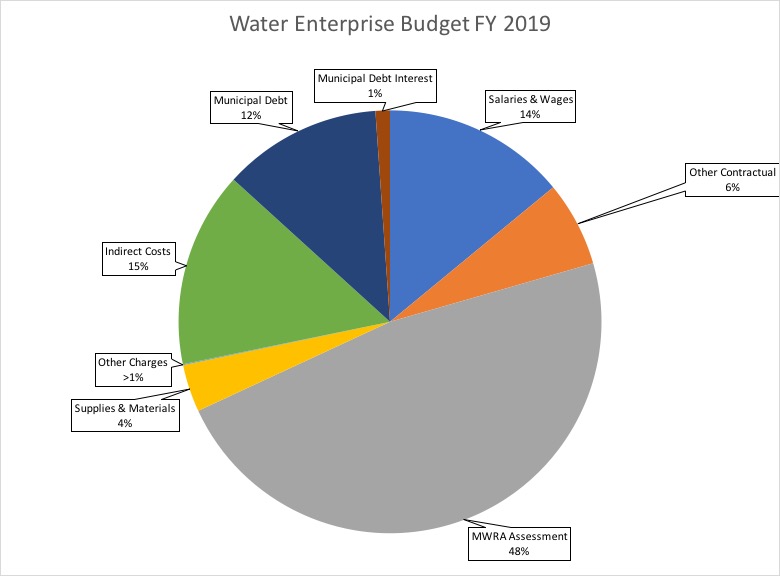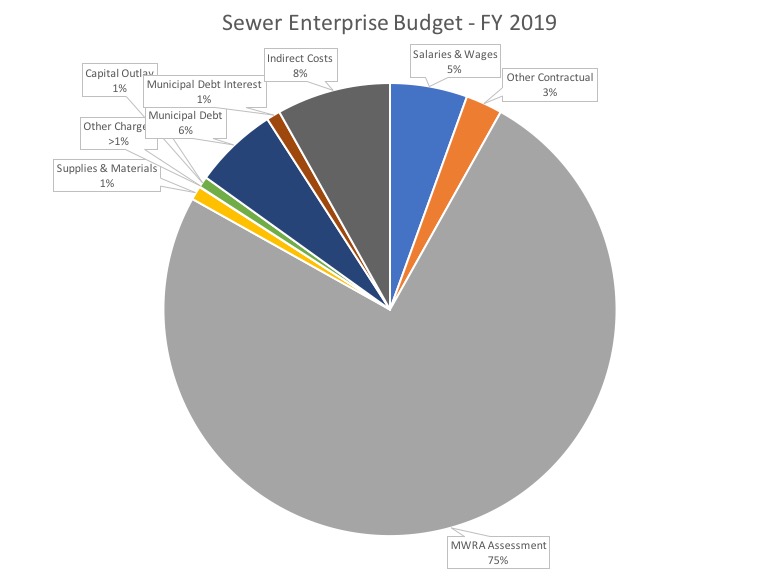Inside the Budget, Part 4: Enterprise Funds
Every year, at budget time, the mayor presents five budgets to the Board of Aldermen. The one we spend the most time talking about, and the one we just refer to as “the budget,” is the general operating budget. That’s the budget that is funded by city taxes and state aid and is used to run all city operations. I have already explained revenues and expenditures in the general operating budget, as well as the mystery of Proposition 2 1/2, and now I want to briefly explain some budgets that we call “enterprise funds,” which are separate from the operating budget.
Enterprise funds each exist for a specific purpose, and they are funded by ratepayers and user fees, not by taxes. Here they are, with their FY 2019 bottom lines:
- The Water Enterprise Budget ($6.1 million)
- The Sewer Enterprise Budget ($8.8 million)
- The Mount Hood Enterprise Budget ($1.8 million)
- The Ambulance Enterprise Budget ($1.1 million)
With an enterprise fund, users—not taxpayers—pay directly for infrastructure, capital improvements, equipment, and day-to-day operations. As the term “enterprise” suggests, these funds run like small businesses. Water bills, for instance, pay the cost of getting water to your home. Keeping these funds separate from the operating budget means that we won’t have to lay off teachers because the water pipes need to be replaced. The Massachusetts Department of Revenue’s Division of Local Services advises communities as to which functions can be enterprised, and the City of Melrose has followed their guidelines in establishing these four funds. Bond rating agencies such as Standard & Poors (with whom the City of Melrose has a bond rating of AA+) consider enterprise funds to be the most responsible method (“best practice”) for the accounting and recognition of revenues and expenses.
As an example, let’s look at the water and sewer enterprises:

As you can see, the biggest item in the water budget is our MWRA assessment—the cost of the water itself. The cost of the staff who work directly on our water system accounts for 14% and the cost of debt service on our capital projects is 13%. We must continuously repair and replace our water mains and other parts of the system. As a past member of the Board of Aldermen, I remember the significant problems we had with the water system 15 years ago. We don’t want that to ever happen again.
Finally, 15% of the budget goes to “indirect costs.” This is the cost of services provided by our other city departments, such as the Treasurer-Collector’s Office, which handles water billing.
Here’s a breakdown of the sewer budget:

As with water, over half the sewer budget goes to the MWRA; in this case, it is 75%.
The other enterprise budgets are handled similarly, but water and sewer are the largest.
While I could go at further length, I just wanted to give you the basics here. If you want to learn more about enterprise funds, the Massachusetts Department of Revenue has an Enterprise Fund Manual with further details.
